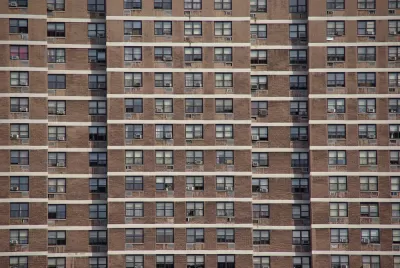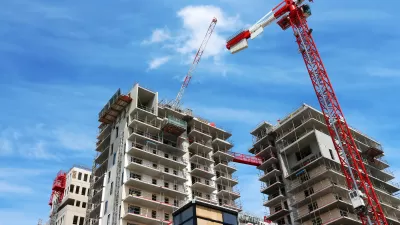It's not just New York and San Francisco—many professions don't offer enough wages to afford an apartment at today's prices.

Looking at national housing data collected in the 2016 State of the Nation's Housing report, Elizabeth La Jeunesse finds that "for every 100 very low-income renters (those earning up to 50 percent of area median income) only 57 rental units were affordable and available."
That's just one way of looking at the big gap between the available housing supply and the means Americans have to afford it, "due in part to a lack of low-rent units, and is compounded by the fact that many existing low-rent units are occupied by higher-income households," writes La Jeunesse. To further illustrate this point, La Jeunesse breaks down the rental market in the cities of San Francisco, New York City, Washington, D.C., Boston, Los Angeles, San Diego, Philadelphia, Miami, Dallas, each with its own one-bedroom fair market rent (FMR) as well as its own level of income needed to afford a one-bedroom apartment at FMR.
The comparison reveals that it's not just very low income renters that are encountering the housing gap, it's also emergency medical technicians, cashiers, truck drivers, and many more.
For example, according to 2015 HUD estimates, the fair-market rent (including utilities) for a modest one-bedroom apartment was as much as $1,635 in San Francisco, and over $1,200 in New York and Washington, DC. Data from the Bureau of Labor Statistics indicate that in these markets, most full-time cashiers, retail and sales persons, and food preparation workers would have been unable to afford even a modest one-bedroom apartment, under the standard assumption that they should spend no more than 30 percent of their income on housing.
This kind of framing for the housing crisis, concentrating on the types of workers that can't afford to live in specific cities, gained the spotlight again in the weeks since La Jeunesse published this analysis. Attorney Kate Downing famously announced her resignation as a member of the Palo Alto Planning and Transportation Commission, inspiring lots of responses and commentary. One of the talking points from the resignation letter: the inability of teachers, first responders, and service workers (as well as attorneys and software engineers) to afford that city.
FULL STORY: Many Full-Time Workers Face Housing Affordability Problems

Planetizen Federal Action Tracker
A weekly monitor of how Trump’s orders and actions are impacting planners and planning in America.

Congressman Proposes Bill to Rename DC Metro “Trump Train”
The Make Autorail Great Again Act would withhold federal funding to the system until the Washington Metropolitan Area Transit Authority (WMATA), rebrands as the Washington Metropolitan Authority for Greater Access (WMAGA).

The Simple Legislative Tool Transforming Vacant Downtowns
In California, Michigan and Georgia, an easy win is bringing dollars — and delight — back to city centers.

Supporting Cycling Takes More Than Just Bike Lanes
Safe, protected bike lanes are a key part of a city’s bike infrastructure — but secure parking, e-bike charging, and other amenities can also influence people’s shift to cycling.

Judge Blocks Anti-DEI Rules for Transportation, Housing Grants
A second injunction blocks the Trump administration from enforcing new regulations for federal funding.

Unhoused People in San Jose Could Face Arrest if They Refuse Shelter
A policy proposed by the city’s mayor would give law enforcement the option to arrest homeless residents if they refuse three offers of housing.
Urban Design for Planners 1: Software Tools
This six-course series explores essential urban design concepts using open source software and equips planners with the tools they need to participate fully in the urban design process.
Planning for Universal Design
Learn the tools for implementing Universal Design in planning regulations.
Smith Gee Studio
City of Charlotte
City of Camden Redevelopment Agency
City of Astoria
Transportation Research & Education Center (TREC) at Portland State University
US High Speed Rail Association
City of Camden Redevelopment Agency
Municipality of Princeton (NJ)





























